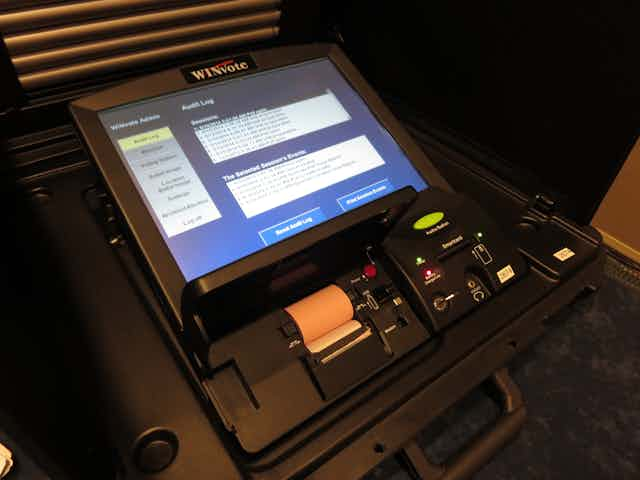During this year’s voting, the vast majority of states used outdated voting machines perilously close to the end of their projected lifespan. Back in April, we warned that 42 states use machines that are at least a decade old. Given that a high percentage of these machines have projected lifespans of between 10 and 15 years, we argued something needs to be done soon to prevent a real crisis.
We also pointed out, though, that the fact that the machines are aging does not mean they will all break down at once. Fortunately, on Election Day, most Americans were able to vote on machines that functioned properly, though in a few areas like Detroit, problems were widespread.
In addition, election officials were well-prepared. Keenly aware of the potential problems associated with using antiquated equipment during a high-turnout election, they were generally able to keep voting going smoothly when problems did arise.
Still, the failures that we did see serve as a warning of how bad things could get if we don’t replace our aging voting equipment soon. In a 2010 report, one state’s Department of Legislative Services found that the “nature and frequency of equipment failure beyond the manufacturer’s life expectancy cannot be predicted.” As machines approach the 15-year mark, we are likely to see progressively worse and more frequent problems.
Problems started early
Machine problems had already cropped up at the start of this year’s early voting.
Many difficulties tended to affect paperless computerized voting machines, or direct recording electronic machines (DREs), on which voters make their selection on a touchscreen, with a button or a dial. In Georgia, Nevada, North Carolina, Tennessee and Texas, early voters reported calibration problems, or “vote flipping.” It’s a problem unique to touchscreen machines, where a voter intends to pick one candidate, but another shows up as her choice.
In Shelby County, Tennessee, 30 smart cards failed, making it impossible to pull up the correct electronic ballot on voting machines. In Hays County, Texas, voters waited for over an hour because a “faulty cable connection” caused voting machines to fail on the second day of early voting.
Voting machine problems persisted through Election Day. Reports of malfunction came from several voting locations. Calibration errors were reported in the key swing state of Pennsylvania. In one Utah county, due to widespread memory card failure, 75 percent of the county’s nearly 400 voting machines failed. In the Detroit area, optical scan machines would not accept ballots.
But at least in some cases, there were ways to work around these sorts of problems. In Durham County, North Carolina, computer problems caused delays for poll workers checking in voters. They switched to backup paper documents, and after litigation, extended voting hours in eight precincts to make up for the difficulties.
A full accounting of Election Day’s problems will likely take months to sort out.
We can’t say how many votes were affected by these problems, but they no doubt contributed to long lines. We likely saw at least as many machine problems as we saw in 2012, when approximately 500,000 to 700,000 people did not vote because of long lines. Of course, there are many potential causes of long lines, including misallocation of poll workers. But other causes are definitely failures both of election officials to provide enough machines and of the machines themselves in certain polling places.
Preventing another Bush v. Gore
As machines get older, these functionality problems will likely multiply. Context matters. Imagine if these problems had taken place in an extremely close race, decided by just a few hundred or thousand votes. The fallout would be disastrous.
We don’t have to imagine what this would look like, because it has already happened. In 2000, problems with faulty voting machines contributed to an electoral meltdown of epic proportions.
One key difference between 2000 and today is that we live in a much more polarized political climate, where discussion of “rigged” elections has become far too common.
Making matters worse, there are more computerized voting machines in use today that do not provide a paper record. In parts of the country using paperless computerized machines – where more than 40 million registered voters reside – voters are asked to trust a system of which they are increasingly skeptical.
Those concerns merge when, on Election Day, a major party candidate takes to cable news and Twitter to cast doubt on the outcome.
Confidence in election outcomes and the integrity of our electoral system is the currency of our democracy. It is no exaggeration to say that without that confidence, our democracy will cease to function. Anyone who cares about the legitimacy of our elections in future years will work to ensure our oldest, least reliable and verifiable equipment is replaced.

